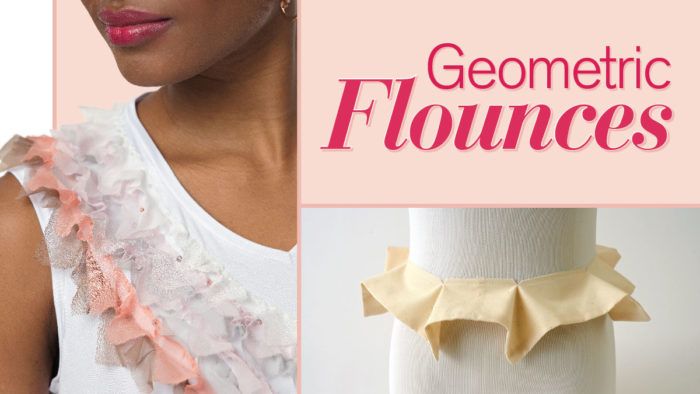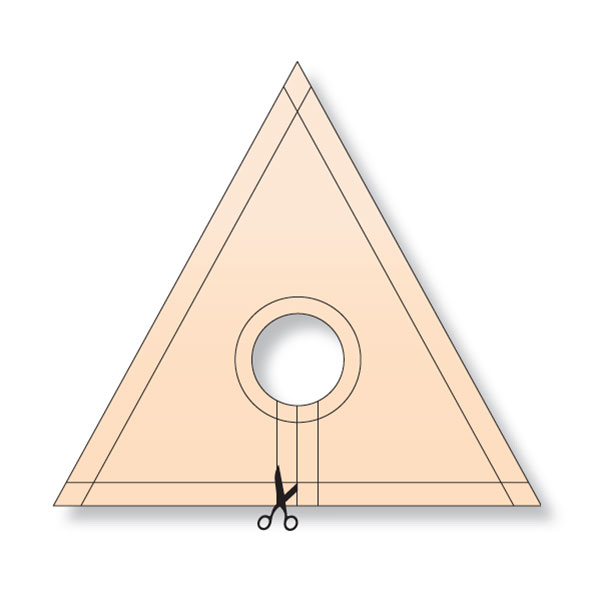How to Sew Geometric Flounces
Play with angles and lines to create nontraditional forms
A flounce is a specific type of ruffle that lacks gathers or fullness at the top edge, where it attaches to the garment, but provides significant fullness at the bottom edge. This is typically achieved by cutting flounces as doughnut shapes. The inside edge of the doughnut is attached to the garment without gathers.
Circular flounces always give a neat, somewhat predictable effect. By playing with shapes other than circles for the inside edge, outside edge, or both, you can achieve interesting effects. Changing the shapes produces varying degrees of drape, volume, and points. Experiment with different configurations to find out what suits your preferences. I’ll show you the math for figuring out the number of flounces you need for any area on a garment, but the process can be more free-form if you prefer.
Flounce types
You can combine inside and outside shapes for varied effects. Outside shapes can be nearly anything, from geometric to organic. Inside shapes need more consideration for how they are attached. For example, a star-shaped inside edge would be impossible to attach without folding the garment itself.
Outside shapes
Changing the shape of the flounce’s outside edge affects the finished look of the flounce, which is determined by the shape’s number of points and how sharp they are.
Inside shapes
When you change the inside shape of a flounce, you can control where the fullness of the outside…
Start your 14-day FREE trial to access this story.
Start your FREE trial today and get instant access to this article plus access to all Threads Insider content.
Start Your Free TrialAlready an Insider? Log in





































Log in or become a member to post a comment.
Sign up Log in